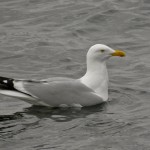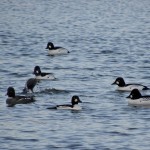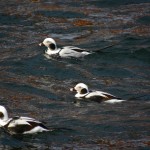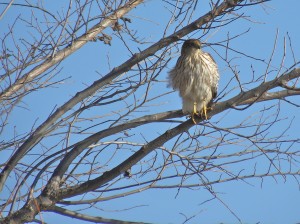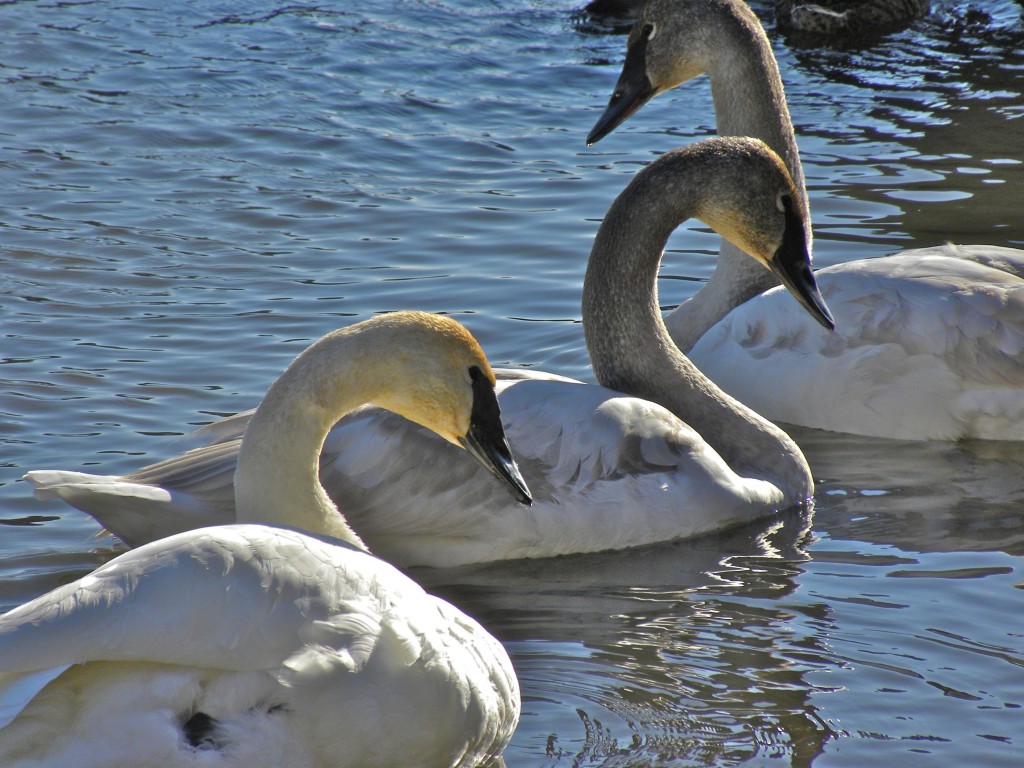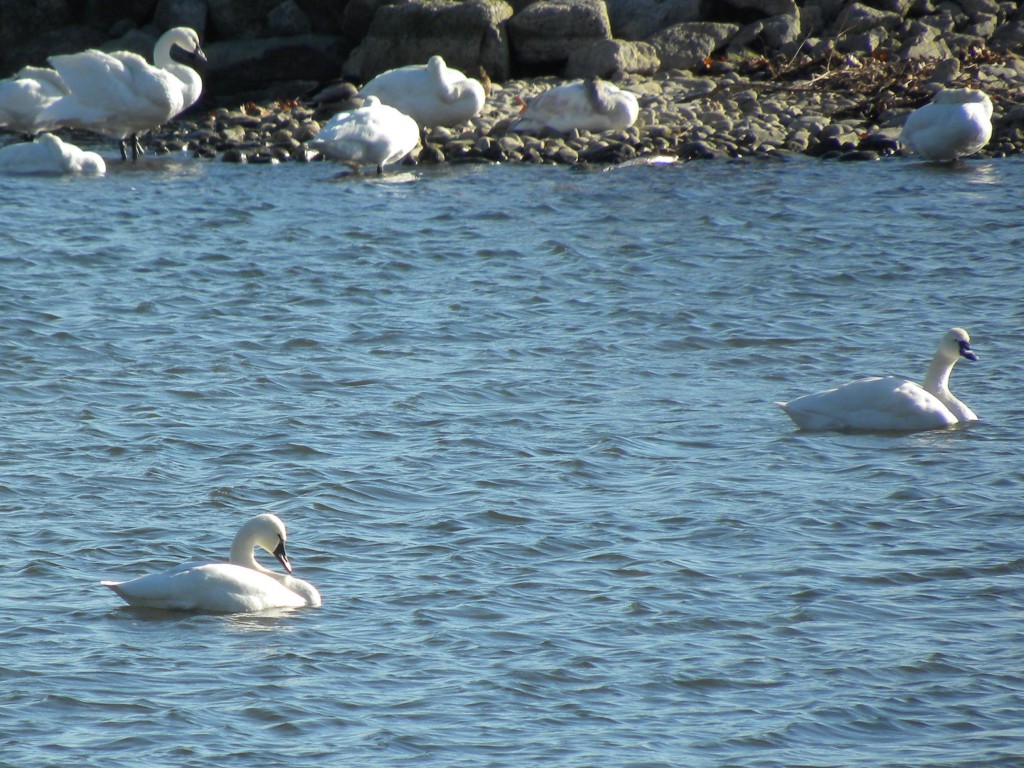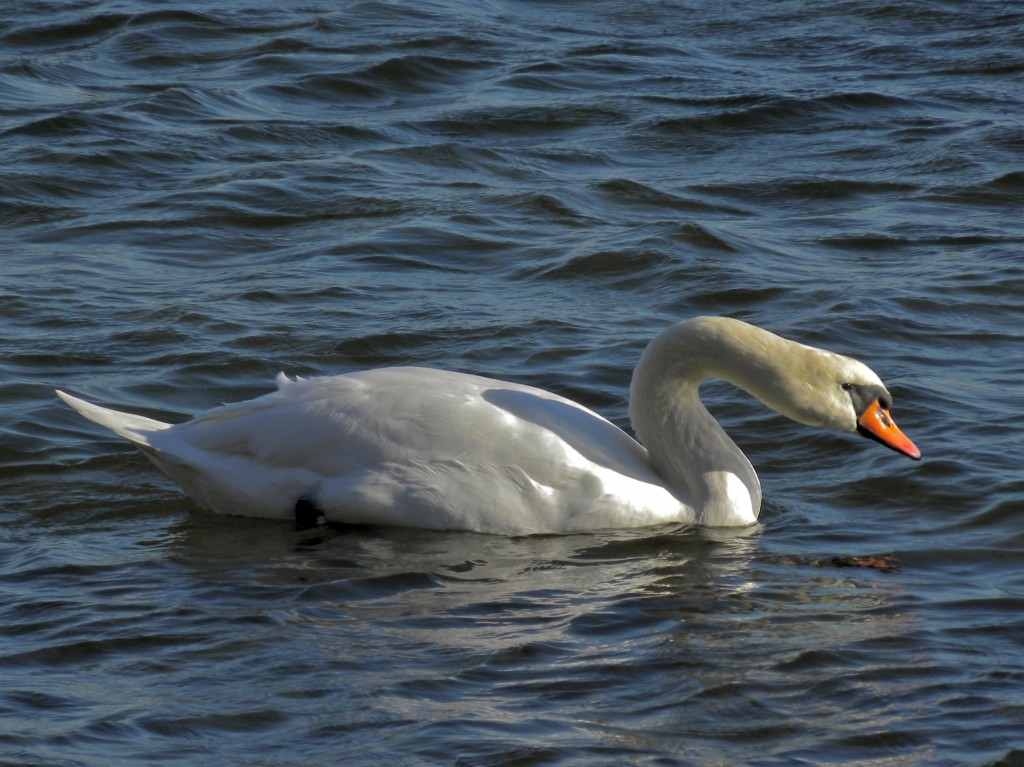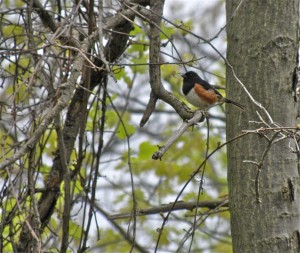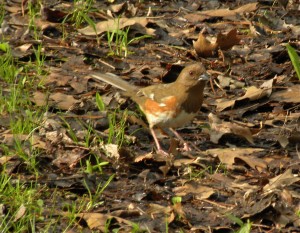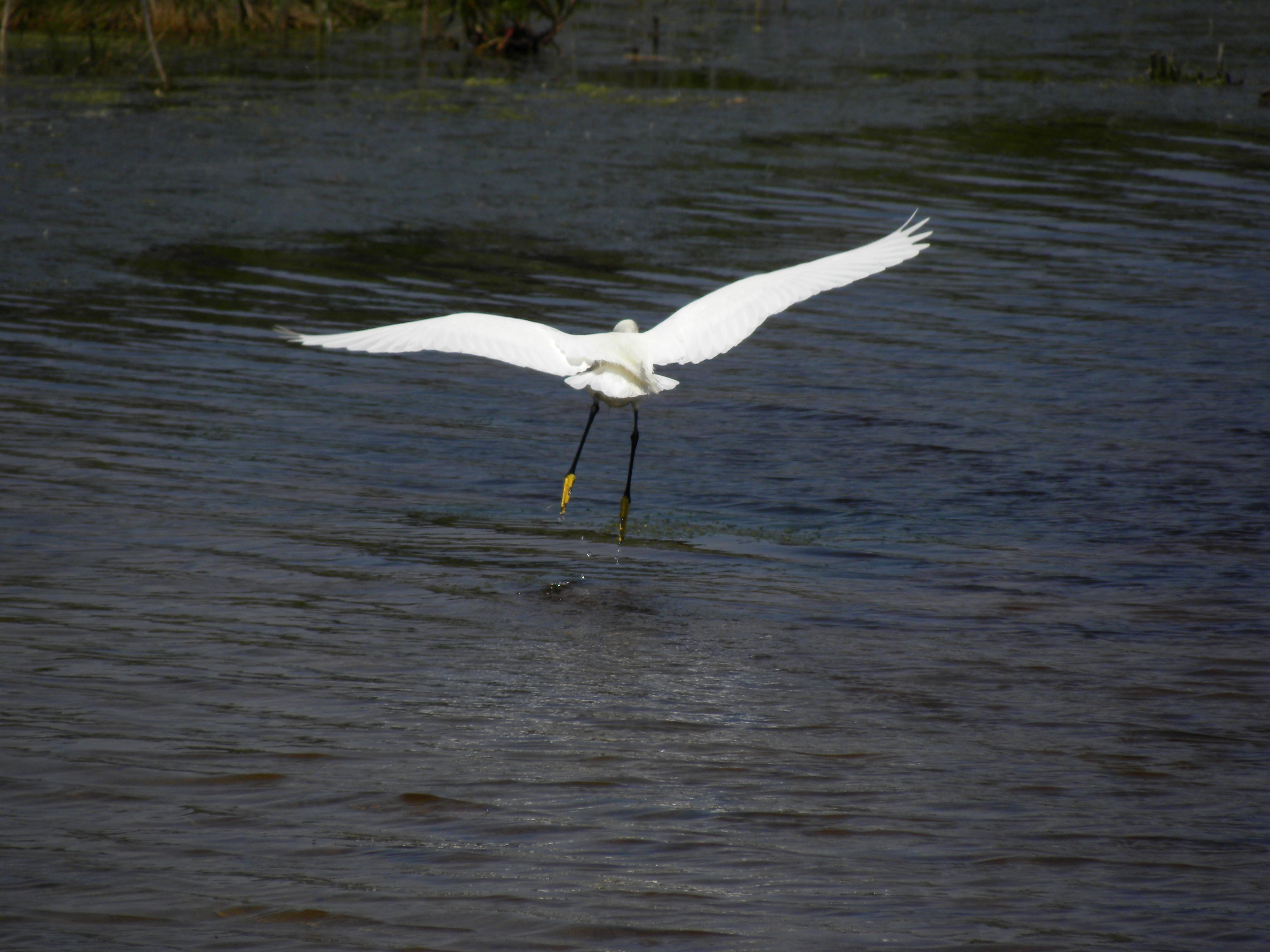December 18 2012. Bronte ON. This morning before it was light, I ferried a cousin to Toronto’s international airport, he’s headed back to St. Maarten and his slow-pace life aboard a catamaran! I don’t need to describe the heavy traffic, the torture of navigating to the right drop-off point or the return journey in rush hour; you’ve experienced it too I know. So you’ll appreciate my motive on my return journey in making a brief diversion to a lakeside marina to see what birds might be around. This was the same marina which last winter hosted a Snowy Owl and which, later in the year, is regularly home to nesting Red-necked Grebes.
I didn’t spend long walking around its shoreline, only long enough to enjoy a few winter ducks. One of the first encounters (auditory only) was a Herring Gull calling from a distant beach. The call: “Kyee kya-kya-kya-kya-kya-kya-kya.” is evocative of the Atlantic coastline and always brings back memories of my childhood on the south coast of England where they, along with Black-headed Gulls, were the sound of summer.
The channels and inlets of the marina held a smattering of Buffleheads and the odd Red-breasted Merganser. A raft of about 30 Greater Scaup was bobbing just offshore on the still waters of the lake and much farther out was a group of male Long-tailed Ducks behaving like a bunch of late night bar patrons trying to out-shout each other. Every now and then one of them took off for a brief ‘look at me guys’ flight only to crash-land back beside the gang and continue the noisy conversation. You expect this sort of behaviour in March when testosterone levels are high and the girls are paying attention, but in mid December?
Closer and far more sedate, were two Common Goldeneyes, just hanging around waiting for winter to come and go. I always check Goldeneyes carefully just in case there’s a stray Barrow’s Goldeneye from the West coast mixed in; but not this time. They are a handsome bird and for their composure and poise the Common Goldeneyes were my Bird of the Day.
